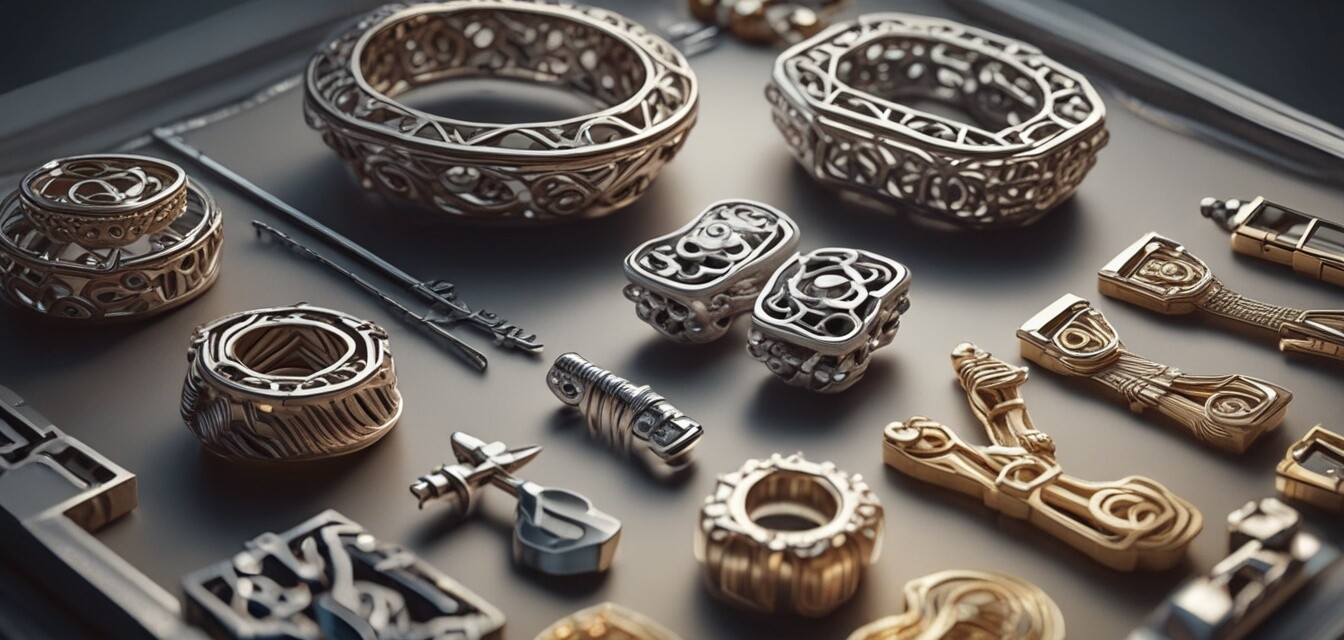
The Role of Technology in Custom Jewelry Design
Key Takeaways
- Technology is reshaping the custom jewelry design landscape through innovations like 3D printing and virtual try-on services.
- 3D printing allows for precise and personalized designs that were previously impossible or impractical.
- Virtual try-on services enhance the customer experience by enabling them to visualize designs on themselves before purchase.
- Technological advancements are driving trends in materials and techniques used in custom jewelry production.
- Stay informed about the latest innovations to make better purchasing decisions and understand industry trends.
The jewelry industry is witnessing a remarkable revolution, thanks to advancements in technology. Custom jewelry design, once limited by traditional crafting methods, is now experiencing a surge of innovation that enhances creativity, personalization, and customer engagement. In this article, we will explore how technology is transforming the landscape of custom jewelry design, focusing on groundbreaking tools such as 3D printing and virtual try-on services.
3D Printing: A Game Changer in Custom Jewelry
3D printing has emerged as a pivotal technology in the custom jewelry sector. This innovation allows designers to create intricate designs with ease, previously requiring a level of skill and time that was often prohibitive.
Benefits of 3D Printing in Jewelry Design
| Benefit | Description |
|---|---|
| Design Flexibility | 3D printing enables designers to create complex shapes and customize pieces for individual preferences. |
| Faster Prototyping | Designers can quickly produce prototypes, making it easier to iterate and perfect designs. |
| Cost-Effectiveness | Reduces material waste and lowers production costs, making custom jewelry more accessible. |
| Unique Materials | Allows the use of innovative materials, offering more options for customization. |
The 3D Printing Process
- Design Creation: Designers utilize computer-aided design (CAD) software to create highly detailed jewelry models.
- Printing: The CAD model is sent to a 3D printer, which constructs the piece layer by layer.
- Finishing: Post-printing, the piece undergoes refinement to achieve its final aesthetic polish.
Virtual Try-On Services: Enhancing Customer Experience
As customers look for interactive shopping experiences, virtual try-on technology has gained popularity. This innovation allows potential buyers to visualize how a piece of jewelry would look on them without physically wearing it.
How Virtual Try-On Works
Most virtual try-on services utilize augmented reality (AR) to superimpose digital images of jewelry onto a user's live image, enabling a realistic preview of designs.
Benefits of Virtual Try-On
- Enhances confidence in purchasing decisions by allowing customers to see how pieces look on them.
- Reduces return rates as customers are better informed about how jewelry will suit them.
- Promotes engagement with brands, fostering a modern shopping experience.
Emerging Trends and Future Prospects
The integration of technology in custom jewelry design is just beginning. Here are some promising trends expected to influence the industry's future:
- Blockchain Technology: Ensuring authenticity and provenance of luxury pieces.
- Sustainable Practices: Innovations in recycling materials for environmentally friendly designs.
- AI in Design: Artificial intelligence tools to predict trends and generate design suggestions.
Conclusion
In conclusion, technology is playing a transformative role in the world of custom jewelry design. From the precision of 3D printing to the interactive nature of virtual try-ons, these innovations enhance the creative process and improve customer experience. Keeping an eye on these trends will not only equip buyers with knowledge but also inspire jewelry enthusiasts to appreciate the blend of artistry and technology.
Pros
- Enhanced design capabilities and personalization.
- Improved customer engagement and satisfaction.
- Cost-effective production methods.
- Access to unique and innovative materials.
Cons
- Initial investment in technology can be high for small businesses.
- Some customers may prefer traditional handcrafted designs.
- Potential technical issues with virtual platforms.
Stay Updated on Jewelry Trends
For those interested in the latest trends and innovations in jewelry design, consider exploring our detailed Buying Guides for invaluable insights. You can also check out our News and Trends for continuous updates.